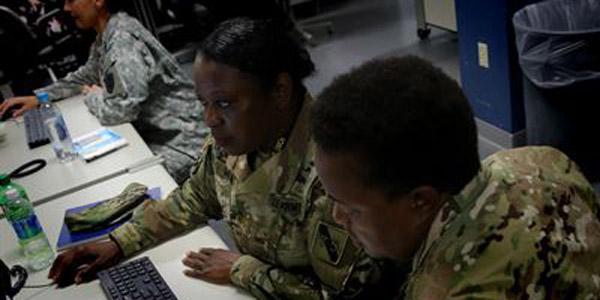It’s Official: President Elevates U.S. Cyber Command
After months of uncertainty, President Donald Trump announced today that he has elevated the U.S. Cyber Command to a unified combatant command. In addition, Cyber Command ultimately may be separated from the National Security Agency (NSA).
“This new unified combatant command will strengthen our cyberspace operations and create more opportunities to improve our nation’s defense,” Trump said. “The elevation of United States Cyber Command demonstrates our increased resolve against cyberspace threats and will help reassure our allies and partners and deter our adversaries.”
He added that the command’s elevation streamlines command and control of time-sensitive cyberspace operations by consolidating them under a single commander with authorities commensurate with the importance of such operations. The move also will ensure that critical cyberspace operations are adequately funded.
Secretary of Defense Jim Mattis is examining the possibility of separating the command from the NSA and will announce recommendations at a later date.
A Defense Department statement says the elevation will mark a significant evolution in the way that the department organizes to execute cyberspace missions and "reflects the growing centrality of cyberspace to U.S. national security."
The move really doesn’t come as a surprise, says Richard Forno, director of the Graduate Cybersecurity Program at the University of Maryland, Baltimore County, and assistant director of its Center for Cybersecurity. Former President Barack Obama approved the move before leaving office, but it took a while for President Trump to make it official, Forno points out.
The command’s elevation offers several benefits, he says. First, it further separates military cyber operations and intelligence community cyber operations. Although there has been a firewall between the two, “Having the NSA director dual-hatted can present opportunities for conflicts of interest,” Forno says.
While NSA and Cyber Command still might share resources, and perhaps even some personnel, the two organizations will be better able to focus on their specific missions, he adds.
Furthermore, Cyber Command will now be on the same level as other commands, such as U.S. Strategic Command, which controls the nation’s nuclear arsenal. The Defense Department created Cyber Command by combining two organizations within Strategic Command.
“One area of concern is that it puts cyber into the traditional military organizational structure,” Forno says, indicating that the new command could be limited by more conventional planning, procurement and budgeting processes. He compares it to the Defense Department’s creation of U.S. Special Operations Command, which combined previously disparate and unconventional organizations. “Cyber is the new unconventional operations,” he said.





Comments